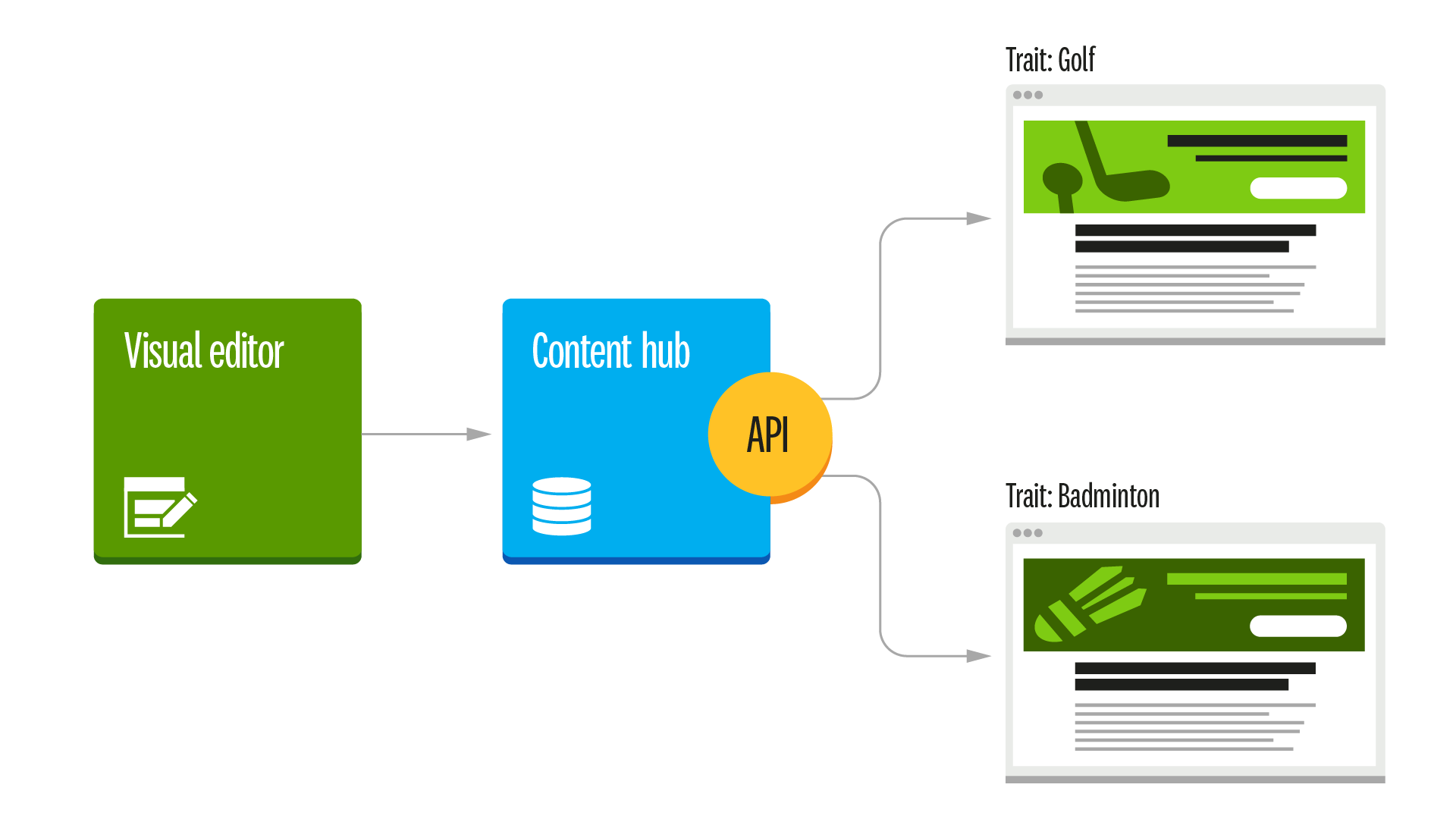2024 Gartner® Magic Quadrant™ for Digital Experience Platforms
Magnolia zum vierten Mal in Folge ausgezeichnet.

Wirkung erzeugen mit Personalisierung.

Ihre Besucher erwarten, den richtigen Content zur richtigen Zeit. Ob diese Erwartung erfüllt wird, ist ausschlaggebend dafür, wie Besucher Ihre Marke und Ihr Angebot wahrnehmen.

Engagierte Besucher verweilen häufig länger, kaufen mehr und bleiben Ihnen treu. Durch Personalisierung können Sie eine Experience bereitstellen, die Ihre Kunden überzeugt.

Wenn es darum geht, höhere Ergebnisse zu erzielen, ist es entscheidend, Besuchern relevante, kontextbezogene digitale Experiences bereitzustellen.
Erstellen Sie für einzelne Besuchersegmente personalisierte Experiences, die zum jeweiligen Besucher, seinem Verhalten und dem aktuellen Weltgeschehen passen. Magnolia vereinheitlicht und nutzt Ihre Daten, um Ihre Website und andere digitale Kanäle auf Ihre Kunden zuzuschneiden und so die Customer Experience zu verbessern und die Konversionsrate und das Engagement zu erhöhen.
Magnolia ermöglicht die Omnichannel-Personalisierung und -Optimierung ganz ohne die Performance zu beeinträchtigen. Sie können personalisierte Experiences von Magnolia bereitstellen oder über unsere APIs personalisierten Content abrufen und so die Headless-Personalisierung an jedem Frontend ermöglichen.
Magnolia bietet vorkonfigurierte Personalisierung und A/B/n-Testing und macht die Integration von Daten von Drittanbietern ganz einfach. Bringen Sie Content, Analytics und Kundendaten auf einem Bildschirm zusammen und erstellen Sie personalisierte und optimierte Experiences, die Ihre Kunden begeistern werden.

Headless-Architekturen werden aufgrund ihrer Flexibilität immer beliebter. Die Frage ist jedoch: Lassen sich Headless und Personalisierung miteinander kombinieren?
Durchaus, mit Magnolia! Sie können benutzerdefinierte Frontends erstellen und personalisierten Content ganz einfach über unsere API abrufen.
So funktioniert‘s: Marketer und Content-Autoren erstellen mit dem visuellen Editor von Magnolia personalisierte Versionen einer Komponente, die auf spezifischen Merkmalen der Zielgruppe basieren. Entwickler fragen den Content ab, indem sie diese Merkmale bei ihrer API-Anforderung angeben. Das Ergebnis ist sauberer, personalisierter Content. So wird die Headless-Personalisierung zum Kinderspiel.
Definieren Sie Zielgruppensegmente anhand spezifischer Merkmale und erstellen Sie personalisierte Experiences für jede Gruppe, um die Relevanz des Contents und das Engagement zu erhöhen.
Erstellen Sie mehrere Versionen einer Seite und testen Sie, welche Version Ihre Zielgruppe bevorzugt. So können Sie die Performance Ihres Contents optimieren und mehr Besucher in Kunden konvertieren.
Fügen Sie Snippets in Ihre Seiten ein, um Webanalysen zu sammeln und die Performance zu verfolgen, um bessere Einblicke zu erhalten und Zuordnungen machen zu können. Sie können auch Content von Dritten aus Social-Media- oder Anzeigennetzwerken einbinden.
Integrieren Sie Ihre Marketing Automation, Ihr CRM oder Ihre CDP, um das Benutzerverhalten zu verfolgen und Kundendaten an zentraler Stelle zu erfassen. Auf diese Weise erhalten Sie eine 360-Grad-Ansicht Ihrer Kunden.
Binden Sie Ihre externen Analytics-Dashboards direkt in Magnolias Authoring-Schnittstelle ein und zeigen Sie Analytics-Daten im Kontext an, um Ihre Experiences zu verbessern.
Mithilfe der Diagnosen und Empfehlungen auf der jeweiligen Seite können Sie Ihren Content genau prüfen und seine Relevanz für SEO optimieren.
Headless personalization is content personalization delivered through a headless content management system (CMS). With headless CMS architecture, content management and delivery are decoupled so that content can be managed and created without the constraints of the presentation layer. Headless personalization allows for more flexibility in the content delivery process and enables personalized content delivery to multiple channels and devices.
Yes, Magnolia's personalization capabilities are headless-ready. Magnolia provides a headless content delivery API that allows organizations to deliver personalized content and experiences to any channel or touchpoint, including websites, mobile apps, and IoT devices. Magnolia's headless capabilities enable organizations to decouple the content management and delivery layers, providing greater flexibility and scalability.
Personalization in CMS (Content Management System) refers to the ability to customize content and experiences for individual users based on their behavior, preferences, and other data. Personalization refers to creating variants of content for different audiences, defining which audience segment should receive which variant, and also testing the variants (e.g., through A/B testing).
Depending on the type of data used for personalization, there is implicit (i.e. data is captured by tracking the user’s behavior) and respectively explicit (i.e. data is provided by the user) personalization.
One popular method for personalization is rule-based personalization, which involves setting a set of rules or criteria for personalizing content based on user behavior or qualities. A good example is an ecommerce site that might use a rule-based system to suggest products based on a user's location, browsing habits, or past purchases.
There are several types of personalized marketing, including:
Personalization and codification are closely related terms. This is because personalization involves creating custom experiences for different users.
Personalization involves tailoring content and experiences to individual users based on their behavior, preferences, and other data points. Personalization aims to create a customized experience that feels unique and relevant to each user.
Codification involves creating standardized content and experiences that can be applied to a wide range of users. Codification aims to create a consistent and predictable experience that can be easily replicated across different touchpoints and channels.
The steps of web personalization typically involve: